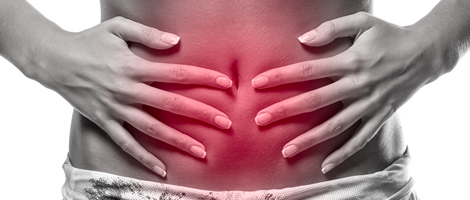What is endometriosis?
Endometriosis is a disease involving growth of tissue outside the endometrial (uterine) cavity. It commonly involves the ovaries, fallopian tubes, bowel, and even the bladder. Rarely, endometrial tissue spreads beyond the pelvic region.
In endometriosis, the displaced tissue continues to act as it normally would. It thickens, breaks down and bleeds with each menstrual cycle. When endometriosis involves the ovaries, cysts known as “endometriomas” may form.
The cause of endometriosis is still unknown, although it often runs in families. In addition to genetics, scientists suspect there may be biochemical or immunological factors, but it is unclear if these factors contribute to endometriosis or simply result from it.
What are the symptoms?
The most common sign of endometriosis is pelvic pain. Although many women experience menstrual cramps, those with endometriosis often describe pain that is far worse than usual. They also tend to report that the pain has increased over time.
Signs and symptoms of endometriosis include:
- Pelvic pain and cramping, which may begin before and extend several days into your menstrual period. You may also experience lower back pain and abdominal pain.
- Excessive bleeding during periods or bleeding between periods.
- Pain with bowel movements or urination, typically during your period.
- Pain with intercourse.
- Diarrhea, constipation, bloating or nausea, especially during menstrual periods.
ndometriosis is often mistaken for other conditions that can cause pelvic pain, such as pelvic inflammatory disease. It also may be confused with irritable bowel syndrome, a condition that causes diarrhea, constipation, and abdominal cramping.
Does endometriosis cause infertility?
According to the American Society for Reproductive Medicine, up to 50 percent of women with endometriosis will experience infertility. Endometriosis can make it more difficult to get pregnant due to:
- Scarring in the fallopian tubes.
- Cysts or adhesions in the ovaries.
- Inflammation of pelvic structures.
- Hormonal changes that may affect egg development and/or embryo implantation.
How is it diagnosed?
The only way to determine if you have endometriosis is a minimally invasive procedure called laparoscopy. The procedure allows a doctor to look at the outside of the uterus, fallopian tubes, ovaries, and the internal pelvic area. If any cysts are discovered, they can be removed during the same procedure.
At the time of surgery, your doctor may evaluate the amount, location, and depth of endometriosis. This “score” determines whether your endometriosis is minimal (Stage 1), mild (Stage 2), moderate (Stage 3) or severe (Stage 4). Women with Stage 4 endometriosis—which causes considerable scarring, blocked fallopian tubes, and damaged ovaries—experience the most difficulty becoming pregnant and often benefit from assisted reproductive technology.
How is endometriosis treated?
Birth control pills will help to relieve pelvic pain and menstrual cramps in many women, including those with endometriosis.
Women whose symptoms continue despite the pill should consider laparoscopic surgery. Surgical treatment for endometriosis has been shown to improve fertility, especially among women with mild endometriosis. However, the effect of removing abnormalities only lasts for about a year, and then the tissue grows back. Repeated surgery is generally not recommended
Get the treatment that is right for you!
If you are over 30 and have severe endometriosis, for example, it might make sense to skip surgical laparoscopy or intrauterine insemination’s and go straight to in vitro fertilization (IVF). Pregnancy rates with IVF are especially good for younger women.
If you have been trying to get pregnant for six months or more and it is not happening as soon as you had hoped, it is important for both partners—male and female—to have their fertility evaluated so you can pursue the treatment that is more likely to work for you.
The good news is that the majority of women with mild endometriosis will conceive within one year of unprotected intercourse. And many women with more serious endometriosis and infertility can get pregnant with the help of modern fertility treatments.

